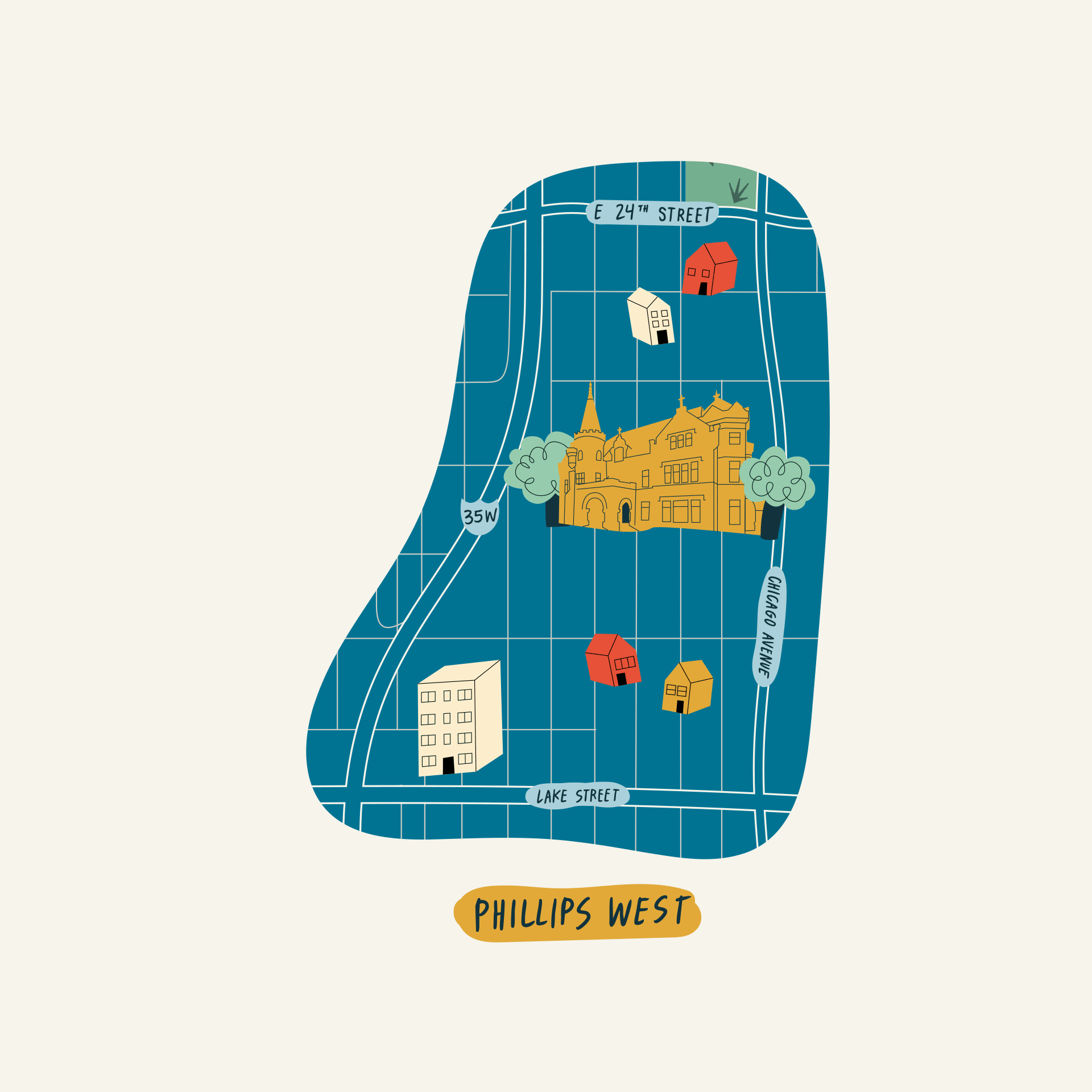Phillips West
Phillips West is a neighborhood where possibility grows from history: where young families build their homes alongside communities of elders, where new buildings bookend storied landmarks (the American Swedish Institute, in the northern node of the neighborhood, is listed in the National Register of Historic Places for its local significance in architecture, art, and education), and where residents have long built relationships of mutual aid to resist the churn of extraction. Centrally located in South Minneapolis, Phillips West maintains deep ties to the neighborhoods in its proximity, collaborating on everything from historical walking tours to community responses to new development. This commitment to relational care rises from both history and necessity. Once part of the greater Phillips neighborhood, Phillips West carries forward a legacy of grassroots coalition-building, a legacy that has uniquely situated the neighborhood to build connections across and beyond borders—whether those physically built by streets and highways, or those imposed by assumptions and misconceptions. As one of the few neighborhoods in Minneapolis without a park, Phillips West residents—who are predominantly renters, and majority Black and Indigenous people and people of color—also face unique barriers to gathering in community; and along the neighborhood’s western edge, the opening of Interstate 35W created a physical border dividing Phillips West from Whittier, with only a handful of pathways or bridges available to enable connection between the neighborhoods. Lake Street, which runs along Phillips West’s southern edge, is one of the few connecting threads available to pedestrians and commuters. Vibrant and kinetic, the corridor offers great food, art, and storytelling, with new murals and window art installations popping up every day, rewarding witness, attention, and curiosity. It is these qualities that animate Phillips West’s history, and its future.
Phillips West is your go-to for:
Diversity: Influenced by many generations of immigrant entrepreneurs, the neighborhood’s businesses reflect Minneapolis’ diversity.
Markets: Small grocers and convenience shops means that your essential needs are always within reach including the Midtown Farmers Market
History: With two unique museums close by, the Somali Museum of Minnesota and American Swedish Institute, the neighborhood holds a lot of Minneapolis' history.









